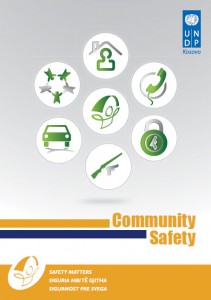This research was supported by the United Nations Development Programme (UNDP) project KOSSAC.
Theviews presented in this report do not necessarily correspond with the views of UNDP.
Acknowledgements: The report was written by Ms. Anna Di Lellio in the period between September and October 2009.The views expressed in this report are those of the authors and do not necessarily represent those of the United Nations Development Programme.
Supported by: UNDP,Government of Belgium, Government of Denmark, Government of Luxemburg,
Government of the Netherlands and Government of Sweden.
Category Archives: Publications
SALW Report
As a result of the dissolution of the Soviet Union and the Yugoslav wars, a legacy of the 1990s in Europe has been the proliferation and trafficking of weapons (Small Arms and Light Weapons, SALW)
1
and ammunition. Locally, this equipment is both a source of and
a means for criminal activities. It also turns up in the global illegal market – a development that regional actors such as the European Union (EU) and the Organization for the Security and Cooperation in Europe (OSCE) deem an urgent security concern.
Kosovo is part of this broader picture. Emerged from a conflict that included the irregular forces of the Kosovo Liberation Army (KLA), since 1999 it has undergone a process of Demilitarization Demobilization and Reintegration (DDR), and several campaigns of weapons seizure and voluntary surrender. Yet, the estimates of illegal weapons possession, no matter how uncertain, are still high compared to collection figures – a gap that must and can be bridged. Contrary to conventional wisdom, which takes Kosovo as a “gun paradise,” the problem is tractable. What is needed is a clear policy that reflects the Kosovo experience, rather than proceed from a series of myths, such as the enduring strength of a “gun culture” linked to ancestral traditions.
Sacred Journey to a Nation: The Construction of a Shrine in Postwar Kosovo
Abstract
Anna Di Lellio
Independent Scholar
and Stephanie Schwandner-Sievers
School of Slavonic and East European Studies,
The site of an infamous Serb massacre of a militant Albanian extended
family in March 1998 has become the most prominent sacred shrine in
postwar Kosovo attracting thousands of Albanian visitors. Inspired by
Smith’s (2003) ‘territorialization of memory’ as a sacred source of national
identity and MacCannell’s [1999 [1976]] five-stage model of ‘sight
sacralization’, this article traces the site’s sacred memorial topography, its
construction process, its social and material reproductions, and adds a sixth
stage to the interpretation — the ‘political reproduction’.

